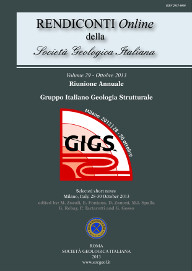
The liquefaction features in the area of the May-June 2012 Emilia seismic sequence: an investigation approach coupling Electric Resistivity Tomography (ERT) with coring
EMILIA WORKING GROUP - Andrea Berlusconi (a), Carlo Alberto Brunori (b), Paolo Campagnoli (c), Francesca Romana Cinti (b), Riccardo Civico (b), Luigi Cucci (b), Paolo Marco De Martini (b), Roberto Gambillara (a), Franz Livio (a), Alessandro Maria Michetti (a), Daniela Pantosti (b), Stefania Pinzi (b) & Stefano Pucci (b)
(a) Università dell'Insubria – Via Valleggio 11, 22100 – Como.
(b) INGV – Roma – Via di Vigna Murata, 605, 00143 Roma.
(c) AMBIENTE TERRA Studio Associato.
Corresponding Author: Franz Livio franz.livio@uninsubria.it
DOI: https://doi.org/
Volume: 29/2013
Pages: 206-209
Abstract
In order to geometrically characterize the liquefaction features observed in the epicentral sector of the 2012 Emilia seismic sequence and to evaluate the potential for recording palaeoseismic features of the area, we performed two electric resistivity tomographic sections and 4 shallow corings, coupled with 14C datings and archaeological age estimates in selected sites. Preliminary results show that there is a good agreement between ERT sections and core-logs; moreover a major role in determining the scalar relationships of the liquefaction features is played by the local geomorphological and topographic setting. The high sedimentation rates obtained through core datings (4 – 20 mm/yr) suggest that the described methodological approach can cover time windows of only a few centuries, thus hardly encompassing, in this tectonic setting, a significant period for paleoseismological purposes.
Keywords
Get Full Text